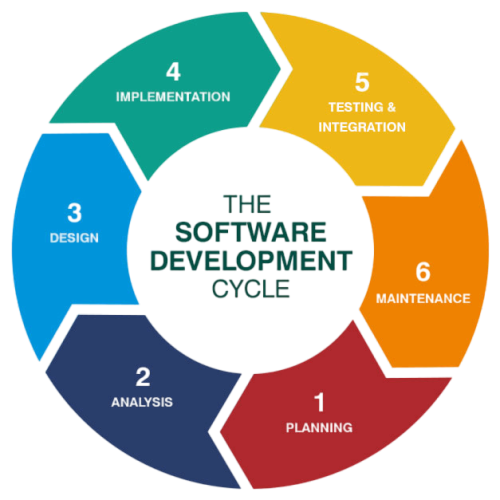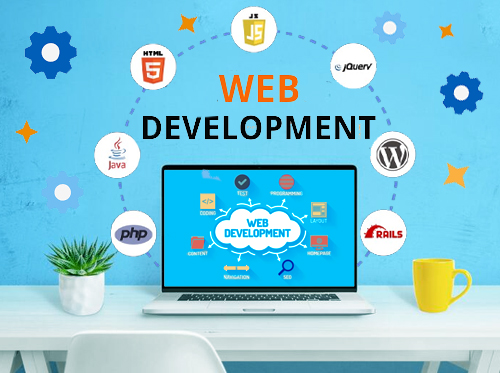Staying current with cutting-edge front-end technologies is crucial for any development team aiming to build engaging, efficient, and scalable web applications. As user expectations continue to evolve, frontend developers need a robust toolkit to create dynamic user interfaces, handle complex features, and optimize performance on a wide range of mobile devices and desktop operating systems. From tried-and-true staples like HTML, CSS, and JavaScript, to modern Frontend Frameworks and headless CMS platforms, each technology contributes unique strengths to the front-end development process. In this guide, we’ll explore the top tech choices for building dynamic, responsive user interfaces that delight and convert users.

HTML: The Backbone of Web Structure
At the core of web-based applications lies HTML (Hypertext Markup Language). It defines the fundamental elements and structure of every page, giving each component a semantic meaning. As one of the earliest programming languages used on the web, HTML forms the building blocks for more advanced features in modern front-end development. Whether you’re crafting static sites, single-page applications, or dynamic applications, HTML organizes your content in a readable format.
Even as frameworks and libraries become more sophisticated, HTML remains indispensable, ensuring a site’s markup is clear to both browsers and users. Skilled web developers rely on HTML’s tags to give page structure, from headings to paragraphs. Combined with other front-end technologies, HTML offers a stable baseline for interactive user experiences.
CSS: Styling the User Experience
CSS (Cascading Style Sheets) handles the design side of front-end, controlling color, layout, and overall visual style. Through responsive design techniques like media queries, CSS adapts pages to different device sizes, from handheld phones to large desktop screens. Also, new designs often incorporate cutting-edge CSS features like Flexbox or Grid to streamline the layout process.
By separating content from presentation, CSS fosters maintainable code and helps front-end developers rapidly tweak the site’s look. Tools like SASS and LESS simplify writing CSS by offering variables, mixins, and nested rules, further boosting developer productivity. Meanwhile, a consistent color scheme, combined with brand-specific typography, ensures your site’s identity remains cohesive across a wide range of devices.
JavaScript: Adding Interactivity
JavaScript is the engine behind dynamic behavior in modern web. From form validation to advanced animations, it injects life into the site. Over time, JavaScript has evolved into one of the primary front-end languages powering dynamic web applications, enabling interactive user interfaces that adapt to real-time changes.
By manipulating the Document Object Model (DOM), JavaScript can update elements on the fly, handle user input, or fetch data from application programming interfaces. Its potential extends to building single-page applications or bridging client-side logic with back-end development via server-side rendering. In short, JavaScript is essential for any front-end development aiming to deliver engaging user interaction and next-level features.
React: A JavaScript Library for Building UI
Developed by Facebook, React has become a go-to library for building user interfaces. It relies on a component-based architecture, which encourages reusable components and modular logic. Perfect for building robust, interactive elements and dynamic content, React excels at handling state management in complex web applications.
React’s “virtual DOM” approach speeds up rendering, as changes are efficiently tracked and only relevant parts of the interface are updated. Thanks to an extensive library of third-party packages and an active community of developers, React is an excellent choice for large-scale, complex web applications. Additionally, React works well with other toolchains for tasks like server-side rendering and static site generation, making it a flexible option for nearly any scenario.
Angular: A Comprehensive Framework
Created by Google, Angular is an open-source framework designed for building entire front-end development solutions, from routing to data services. This comprehensive framework offers strong community support, server-side rendering capabilities, and a structured approach that standardizes code patterns. Using TypeScript for static typing, Angular helps reduce bugs and fosters maintainable, large-scale projects.
With a robust suite of features like directives, two-way data binding, and dependency injection, Angular remains popular for enterprise-level or complex features that need a consistent approach. Its “batteries included” nature ensures dev teams can tackle complex applications without rummaging for additional libraries. While Angular can have a more “steep” or “gentle learning curve” depending on your background, it stands as a strong competitor for building advanced single-page experiences.
Vue.js: Progressive Framework for Building UIs
Vue.js stands out for its gentle learning curve and dynamic user interfaces. This progressive framework was designed to be incrementally adopted, meaning you can integrate Vue into parts of your existing site or build entire interactive user interfaces from scratch. Combining the best ideas from React and Angular, Vue is known for its single-file components, reactivity system, and approachable syntax.
With an active vast community, Vue.js caters to a broad range of use-cases, from small-scale websites to large enterprise-level apps. It’s flexible in terms of structure—some developers use it simply for one piece of the site, while others rely on Vue entirely for their front-end. Between built-in directives and an easy approach to state management, it’s a fan favorite for rapid development and easy reading of code.
Next.js: Optimized React Framework for Production
Next.js offers a layer on top of React to simplify tasks like server-side rendering, file-based routing, and static site generation. Developed by Vercel, Next.js focuses on performance with features like automatic code splitting, image optimization, and integration with serverless backends. This approach ensures minimal overhead for end users, improving load times across a wide range of network conditions.
By enabling both static and dynamic rendering, Next.js bridges the gap between the SEO benefits of static websites and the dynamic behavior of interactive elements. Combining Next.js with React Native fosters a multi-platform synergy, letting dev teams reuse logic across web and mobile. All in all, Next.js is ideal for those looking to push React-based sites to production with minimal fuss.
Svelte: A New Era of Component Frameworks
Svelte offers a distinctive approach: compile-time transformation. Instead of shipping a large runtime library, Svelte compiles your components into minimal JavaScript code. The result is a performance-focused approach that can reduce the overhead typical of other front-end frameworks.
Developers appreciate Svelte’s simpler syntax, enabling them to build UI features quickly. This approach fosters a more “reactive” coding experience, automatically re-rendering user interfaces when data changes. Because it abandons the virtual DOM concept, Svelte often outperforms other frameworks in certain scenarios. For frontend developers seeking an alternative to React or Angular, Svelte offers a refreshing way to craft modern web applications.

Headless CMS: Decoupling Content Management
Traditional content management systems like WordPress or Drupal typically conjoin the front-end with the back-end. Headless CMS solutions like Strapi, Contentful, or Sanity separate back-end content storage from the final rendered front-end. This decoupling allows frontend developers to fetch data from an API and present it via their chosen framework—React, Vue, or Angular—without limitations in theming or plugin restrictions.
This structure provides a more flexible environment to handle dynamic content, enabling dev teams to unify content across multiple channels—web, mobile apps, or even IoT devices. With a Headless CMS, content authors can manage text, images, and product data in a single system, while developers remain free to choose any front-end technology.
Micro Frontends: Enhancing Scalability and Maintenance
Micro frontends break large applications into smaller, independently deployable modules. Each module can be developed, tested, and maintained by separate sub-teams, providing a more scalable approach for large-scale or enterprise-level sites.
By dividing the front-end into mini-apps—like user profiles, checkout processes, or analytics dashboards—companies reduce complexity, allowing each “slice” to be built using the best-suited technology. The architecture helps parallelize development time among specialized sub-teams. This approach resonates with back-end technologies like microservices, reflecting the desire to isolate each part for better performance, faster iteration, and simpler debugging.
Responsive Design: Adapting to All Devices
Responsive design ensures your site’s layout fluidly changes to match the device screen size. By employing fluid grids, flexible images, and media queries, you ensure each page is visually appealing and functional on anything from large desktops to small mobile devices. This concept is crucial for user engagement, especially as more visitors prefer tablets or phones for online browsing and shopping.
Using frameworks like Bootstrap or Tailwind CSS helps front-end devs incorporate mobile-first design principles quickly. They also streamline consistent styles across different breakpoints, reducing guesswork. The result? A visually consistent site delivering a cohesive user experience to a wide range of browsers and operating systems.
User Experience (UX): Importance in Front-End Development
Modern frontend technologies aren’t just about code—they revolve around creating stellar user experiences. Designing an intuitive site structure, leveraging color theory, and ensuring smooth transitions all factor into user engagement and satisfaction. The synergy of responsive user interfaces, good visual hierarchy, and easy navigation fosters a positive impression.
This drive for better UX extends to tasks like content strategy, brand identity, and digital marketing synergy. By carefully orchestrating each element of the designs—from CTA buttons to interactive forms—front-end teams can shape the entire user journey, increasing brand loyalty and conversion rates.
Performance Optimization: Speeding Up Load Times
Speed matters. Studies show that slow loading times lead to user frustration and higher bounce rates, especially on mobile networks. Front-end developers use optimization techniques like lazy-loading images, minifying code, and caching static resources to boost speed. Tools such as Lighthouse or PageSpeed Insights gauge page performance, guiding devs in areas needing improvement.
Beyond code, architecture decisions—like leveraging server-side logic, network CDNs, or compression—can drastically improve performance across diverse devices. This approach is essential for sites with heavy traffic or E-commerce websites, where every second can make or break a user’s decision to buy. With performance at the forefront, businesses ensure a frictionless experience from landing page to checkout.
Accessibility: Ensuring Inclusivity in Web Development
An inclusive web is built to serve all users, including those with disabilities. Ensuring proper color contrast, keyboard-only navigation, or screen reader compatibility fosters better user acceptance and meets legal guidelines. Labeling form fields, providing alt text, and avoiding purely color-based cues helps a more diverse audience benefit from your site.
Front-end developers often consult WCAG (Web Content Accessibility Guidelines) for best practices. This approach not only broadens your user base but aligns with socially responsible coding standards. Combining accessibility with strong user experiences elevates brand trust and respect, valuable in any industry.
Version Control: Collaborating Efficiently with Git
Version control systems like Git ensure that multiple developers can work on the same codebase without collisions. Each developer can branch off, implement features or bug fixes, and merge changes systematically. Such systems maintain code history and allow rollbacks if something breaks. Platforms like GitHub or GitLab also offer continuous integration, simplifying the entire dev pipeline.
Git fosters an environment of collaborative synergy. Through branching strategies, code reviews, and merge requests, teams refine each commit for clarity and correctness. This approach is fundamental for front-end projects with multiple devs, ensuring stable, scalable code.
Modern Build Tools: Streamlining Development Workflows
Front-end build tools—like Webpack, Rollup, Parcel, or Snowpack—minify code, optimize images, and bundle dependencies. They also handle tasks like code-splitting, enabling devs to deliver only relevant scripts to each device. Coupled with Babel or TypeScript, these tools keep the developer experience consistent across a wide range of browsers.
Automation is key for large or complex web apps. Tools that watch for file changes and re-bundle code on the fly reduce development friction. Meanwhile, package managers like npm or Yarn handle third-party libraries, ensuring a stable environment. By adopting modern build workflows, dev teams achieve higher productivity and uniform coding standards.
Progressive Web Apps (PWAs): Bridging the Gap Between Web and Mobile
Progressive Web Apps unify the benefits of web pages and mobile applications, offering offline capabilities, push notifications, and icon-based launchers. Created with standard web tech—HTML, CSS, and JavaScript—PWAs drastically improve user engagement, especially for E-commerce or content-heavy sites.
Caching strategies, service workers, and background sync make PWAs highly responsive, even in poor network conditions. With a PWA, users can access certain content offline or see partial data when disconnected. For businesses seeking to unify mobile and desktop experiences, PWAs are a cost-effective approach, reducing the overhead of developing separate native apps for each OS.
How LinkLumin Can Help
At LinkLumin, we blend these modern front-end technologies into a comprehensive approach for building dynamic, user-focused sites and applications. Our skilled team specializes in everything from single-page frameworks like React or Angular to more advanced solutions like Next.js for server-side rendering. We deeply understand responsive design principles, ensuring each page adapts seamlessly to mobile or desktop screens.
Whether your goal is to create a sleek eCommerce platform with interactive user experiences or a robust content hub with a Headless CMS, LinkLumin’s unique synergy of front-end and back-end experience delivers secure web applications with maximum developer productivity. We employ version control systems like Git for consistent collaboration and leverage modern build tools to optimize performance. By aligning the best front-end options with your business requirements, we forge solutions that delight users and drive tangible outcomes.

Conclusion
Navigating the ever-expanding universe of front-end technologies demands a thorough grasp of modern frameworks, best practices, and responsive user interfaces. From foundational pillars like HTML, CSS, and JavaScript to advanced solutions such as micro frontends, PWAs, and headless CMS, each technology contributes to building fast, dynamic web applications that meet or exceed user interaction demands. By leveraging these powerful tools, Front-end developers craft exceptional experiences tailored to diverse devices and network conditions. As the digital realm rapidly evolves, mastering these technologies ensures your site remains relevant, engaging, and future-proof.
Tags




